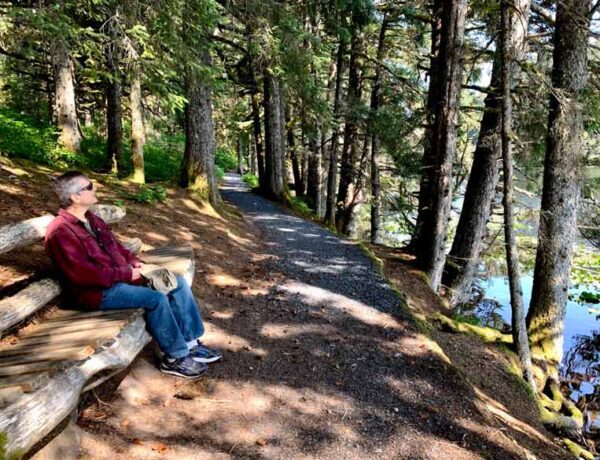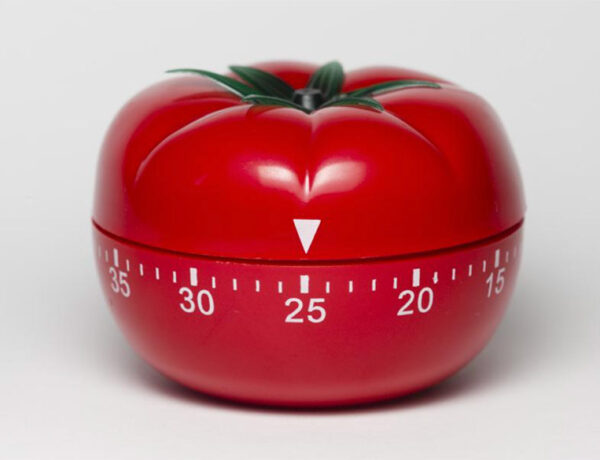In the 1980s my brother Alby was the manager for the Robert Cray Band, the Grammy-award-winning blues ensemble that started in 1974 in Eugene, Oregon. Over the years, Robert… (who’s actually a bit on the shy side) and his band played with giants like Chuck Berry, Keith Richards, and Eric Clapton. Alby and the band toured Europe, Japan, and North America, even Carnegie Hall.
Years later, my brother was reflecting on his globe-trotting schedule. “Yeah, we’d be in London, Tokyo, Paris…but did I really experience those great places? Heck no. It was like living in a bubble.”
The reason I’m telling you this story is that for the nearly 25 years of writing this weekly column, the most common excuse people give for lackluster success in the garden goes something like this: “I’d really like to grow some herbs and lettuce, but I don’t have a green thumb. I just kill plants.”
Hearing such a comment, I’d think to myself (or aloud), “There’s no such thing as a green thumb or a black thumb, just the curiosity to learn and to keep trying.”
[perfectpullquote align=”full” bordertop=”false” cite=”” link=”” color=”” class=”” size=””]Seventy-five percent of developing a new skill, be it gardening, knitting, or lawn mower repair, is the will to stick with it. Saints are just people like you and me. The only difference between us and them is that they never give up.[/perfectpullquote]
[Just so you know, this article was originally published in the Kodiak Daily Mirror, the hometown newspaper for Kodiak, Alaska. You can access the archive page for my past columns, written each week since 1986].
Back to my brother. Alby’s “bubble” experience of the world’s great cities can be compared to a Mason jar filled with seawater and bobbing in the ocean. Does the water in the jar truly connect with the ocean?
In this manner, we move through life without really experiencing it. We dream, but don’t do. We ogle at photos in home and garden magazines, suffer sticker shock in the produce section at the grocery store (all the while thinking, “I could grow my own for far less money”), and envy our neighbors fence-line of tall, purple delphiniums and orange, yellow and white Iceland poppies bobbing in the breeze; yet we hold back from getting our hands dirty.
Speaking of getting our hands dirty, here are several spring chores you don’t want to pass up:
Pruning: Buds are swelling and are likely to pop on currant and gooseberry bushes so now is the time to do some serious pruning if you didn’t get to it last fall. Cut out dead branches and prune out air shoots (they grow straight up from branches), and branches that droop to the ground, cross over, or otherwise rub against adjacent stalks.
Do not throw these cuttings away! Stick them in a bucket of water, covering about a third of the cuttings, or poke them in pots of soil. They’ll begin to produce roots just in time for the spring plant sale on May 8. All proceeds go to support KMXT public radio. And to sell plants, they need plants!
And before you get your hands dirty,
here are a few important tips to keep your back from going out:
Beginning with proper digging…
This is an art form and doing it right makes it much easier and less strenuous.
- Perform a few simple stretching and warm-up exercises before you start.
- Always use sharp tools.
- Use your foot, not just your arms, to push the blade of a shovel or hoe into the soil. And always wearing strong shoes or boots.
- Limit your digging time to manageable sessions, say 30 minutes at a time.
- Stop occasionally to straighten up. And with your hands on the lumbar (lower) area of your back, gently bend backward, then forwards. Repeat five times.
- When working, bend at the hips, not the waist.
- When lifting, bend your knees and keep your back straight.
- After a session of gardening, take a banya (sauna), hot shower, or bath.
- And don’t forget to check your seedlings
If your seedlings are tall and floppy…
REASON: They too warm and/or starving for light. When grown in a toasty living room environment, most cool-loving plants (lettuce, kale, and broccoli) turn into floppy-eared puppies. In general, weak seedlings have a tough time when transplanted outside and exposed to wind and rain.
SOLUTION: Provide them with 14 to 16 hours of light each day.
Simplify your life: Get a timer.
MORE TO THE SOLUTION: Window light doesn’t provide enough energy for young plants. A geranium that’s kept you company blooming all winter? No problem. They love partial light. Not so with young seedlings. When raising seedlings, supple additional light with LED or fluorescent shop lights fitted with 40-watt bulbs. Suspend the lights and maintain an iPhone width above the tops of the seedlings.
True, it’s been a long winter (and a year loaded with speedbumps) but signs of spring abound. For me, it’s the appearance of rhubarb “knuckles” poking through the soil, the yodel-honking of black-legged kittiwakes, and the sun rising through the mountain ash tree in our neighbor’s yard.
Maybe this spring is the time to try something new: To grow a container of salad greens and pansies (which are edible) or pair up with a friend and share a community garden plot. You can read every column I’ve written over the past 25 years, check out gardening books from the library, saturate your brain with YouTube videos but you’ll still live in a bubble.
Spring harbors hope through nature’s predictable signs as well as surprising ones. Like the one I experienced one day at Safeway. A lady, whose face was faintly familiar, pushed her cart past the display of bright green heads of romaine lettuce.
“This year, I’m gonna do it,” she said. “I’m going to grow my own lettuce.”
If you’re on the fence, debating whether or not to jump into gardening this year, take a small step by planting just one container, just one hanging basket, just one halibut tub, or just one half of a community garden bed. Trust the process. Ask questions, listen, and “do.”
[perfectpullquote align=”full” bordertop=”false” cite=”” link=”” color=”” class=”” size=””] Experience is your best teacher. To really garden, you can’t lean on a shovel and dream about it. You have to get dirty. Otherwise, you’re just gardening in a bubble. [/perfectpullquote]
Garden job jar:
- Vegetables: Sow seeds for Swiss chard, mesclun (salad) mixes, lettuce, cauliflower, cabbage, broccoli, kale, mustard spinach, Oriental greens, cucumbers (greenhouse only); zucchini, yellow crookneck squash.
- Herbs: Sow seeds for dill, chervil, coriander (cilantro), sage, arugula (garden rocket), savory.
- Flowers: Sow seeds for calendula, marigolds, nasturtium, canary-bird vine
Peas and harmony,
Marion
P.S. Woweee — Did you know that compost is the #1 thing you can do for your garden? Join the waitlist for my next FREE composting mini-class. Check out my Joy of Composting Facebook page. To contact me by email: marion (at) marionowenalaska.com.





No Comments